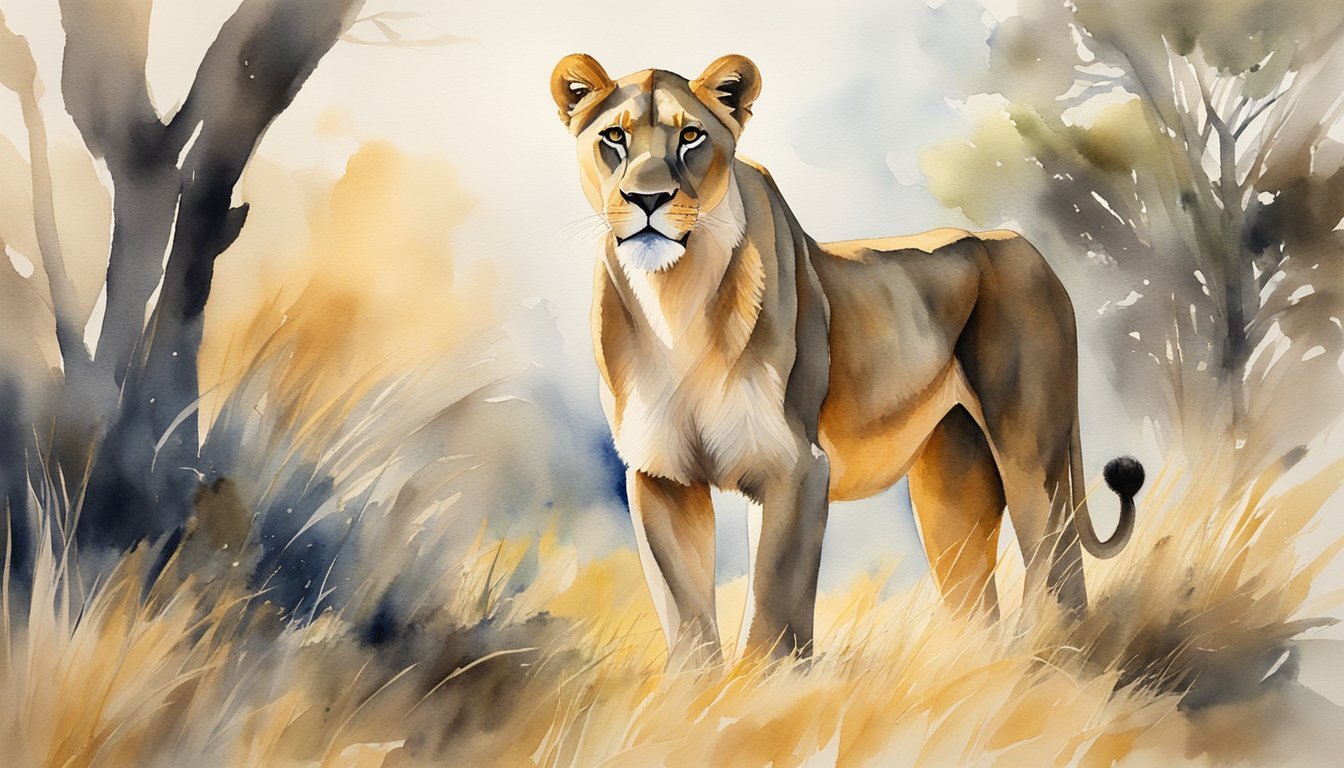Lioness: The Prowess in the Wild

The lioness embodies the essence of strength and strategy in the wilderness. This section dives into the physical attributes and behaviors that spotlight their role as both nurturers and skilled hunters within their natural habitats and juxtaposes their traits with other formidable felines.
Anatomy and Physiology
Lionesses are built for hunting with a leaner physique compared to male lions, allowing them to reach speeds up to 45 mph. Without the males’ prominent mane, their streamlined bodies excel in agility and endurance, crucial for stalking and capturing prey. Their muscular structure and sharp retractable claws make them efficient predators.
Behavior and Social Structure
Within a pride, lionesses exhibit a complex social structure, often related females band together to form the core of the pride. They share responsibilities from hunting to nurturing the cubs. A lioness’s roar, less thunderous than the male’s, is still powerful, serving as a means of communication and territory defense.
Habitat and Conservation Status
Lionesses predominantly reside in the grasslands, savannas, and open woodlands of Africa, with a small population of Asiatic lions in India. The species, listed as vulnerable, faces threats such as habitat loss and conflict with humans. Conservation efforts are critical for their survival.
Comparison to Other Big Cats
In comparison to tigers and jaguars, lionesses have a unique role in their social groups and are the primary hunters of their pride. Unlike these largely solitary cats, lionesses collaborate in hunts, targeting a range of prey from wildebeests, zebras, and antelopes, to larger mammals such as elephants. Their cooperative strategy contrasts with the solitary hunting tactics of tigers and other big cats found in Asia and the Americas.
Lioness in Human Culture and Entertainment

The lioness not only captivates the wild with her grace and power but also fascinates human culture through various forms of entertainment and has potent symbolism in mythology.
Lioness in Film and Television
Special Ops: Lioness, produced by Taylor Sheridan, showcases the story of a Marine recruited into the male-dominated Lioness Engagement Team to take down a terrorist network in Iraq. Sheridan, famed for his work on “1883” and “1923”, incorporates characters like Nicole Kidman’s smart and enduring strategic operations head and Zoe Saldaña’s tough CIA operative into this drama. Actors like Michael Kelly, known for “Mayor of Kingstown”, and Laysla De Oliveira, join a cast including Dave Annable, Lamonica Garrett, and Jill Wagner to enrich the narrative further.
Symbolism and Mythology
In various cultures, the lioness is revered as a symbol of fertility and goddess-like respect, especially in regions of Asia. This creature’s representation extends beyond the pride of the animal kingdom and often into the valor and authority of female deities.
Conservation Efforts in Media
Media plays a crucial role in conservation efforts for lionesses by portraying the plight and magnificence of these animals. Documentaries and conservation programs highlight the need to protect these majestic creatures’ habitats and inform viewers on how they can contribute to these efforts.

